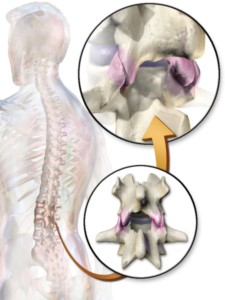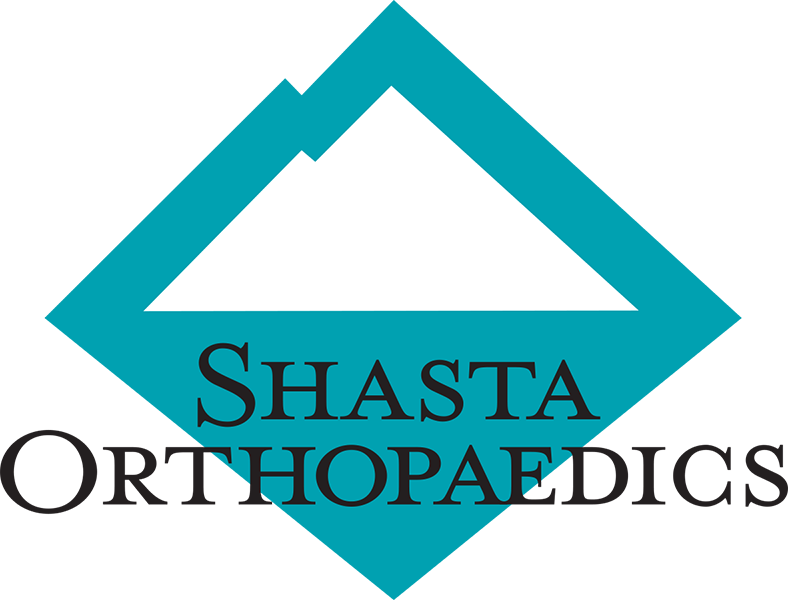Radiofrequency ablation for back and neck pain

The facet joints of the spine are a common cause of back and neck pain
Do you suffer from back or neck pain? Does it make it hard to do activities like walking, gardening, golfing, or even getting out of bed in the morning? If so, radiofrequency ablation may be able to provide relief. Radiofrequency ablation is one of the most common and successful procedures performed for arthritis pain in the spine. It is a quick, non-surgical, outpatient procedure, and you probably have friends, family, or neighbors who have had it done. I’m Dr. Forrest Monroe, interventional pain specialist at Shasta Orthopaedics – I’m highly trained and skilled in this procedure, and have seen it change lives and improve functionality for many of my patients.
Anatomy
The facet joints are small supporting joints at the back of the spine. There is one on each side, between each level of the spine. The two facet joints and the disc make a tripod that supports, cushions, and allows movement at each vertebral level. Thinning of the joints is a natural part of the aging process, but some people will be more susceptible to it due to genetics, lifestyle factors such as smoking and obesity, or work and recreational activities. As the disc thins, it places more pressure on the facet joints – the other two “legs” of the tripod. This can cause degeneration of the joint space, inflammation in the joint, and enlargement of the joint (similar to arthritic knuckles in the hand). If you’ve been told your back pain is due to “degenerative disc disease” there’s a good chance it’s actually due to pain from the facet joints.
Diagnosis
Imaging alone can’t tell us for sure where your pain is coming from, which is why we do a diagnostic test, called a medial branch nerve block – insurance requires this procedure prior to having the radiofrequency ablation. Basically, this is an injection of local anesthetic (numbing medicine, just like novocaine at the dentist) onto the nerves that go to the facet joints. This numbs the joint for a few hours, and during that time you do activities that would usually cause you pain and see if your pain is reduced significantly (most insurers require an 80% or more temporary reduction in your pain to move on with the ablation procedure, and most require 2 sets of these test nerve blocks for confirmation). If you get excellent relief from the nerve blocks, that confirms the diagnosis of facet joint pain, and means you are a good candidate for radiofrequency ablation.
About the Procedure
The radiofrequency ablation procedure uses needles with a small electrode on the tip, which are placed over the same medial branch blocks that were targeted with the test shots (nerve blocks). It goes by many different names: It is also called radiofrequency lesioning, or rhizotomy, or RFA or RFL. It may also be referred to as burning or cauterizing nerves in the spine. The procedure is outpatient, and is usually done with oral sedation like Xanax or Valium. If you tend to be more sensitive to the discomfort of injections, it can be done at an outpatient surgery center with IV sedation. The nerves do eventually grow back after an ablation, however the procedure will usually provide 6-12 months of pain relief, and for some people it will last years. If or when the pain returns, the ablation can be repeated usually with the same results. Because the nerves targeted for the procedure are on the outside of the spine, not in the spinal canal where the spinal cord runs, the risk of spinal nerve damage or other major problems is very low. If you are on blood thinners, in many cases they do not even need to be stopped for the procedure.
Let’s Get Started!
If you are wondering whether radiofrequency ablation could help you, or just have back or neck pain and want to get it checked out, use the form below or call to schedule an appointment with me, Dr Forrest Monroe. I accept self-referrals as long as your insurance allows it, and I do not require any imaging, physical therapy, or other testing before you see me. Shasta Orthopaedics offers everything you need to treat your back or neck pain under one roof – Whether you need physical therapy, chiropractic, radiofrequency ablation or other injections, or even spine surgery, Shasta Orthopaedics Spine Institute is here for you.
(And now the fine print: This information is provided for educational purposes only and is not a substitute for the advice of a physician)


